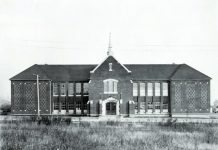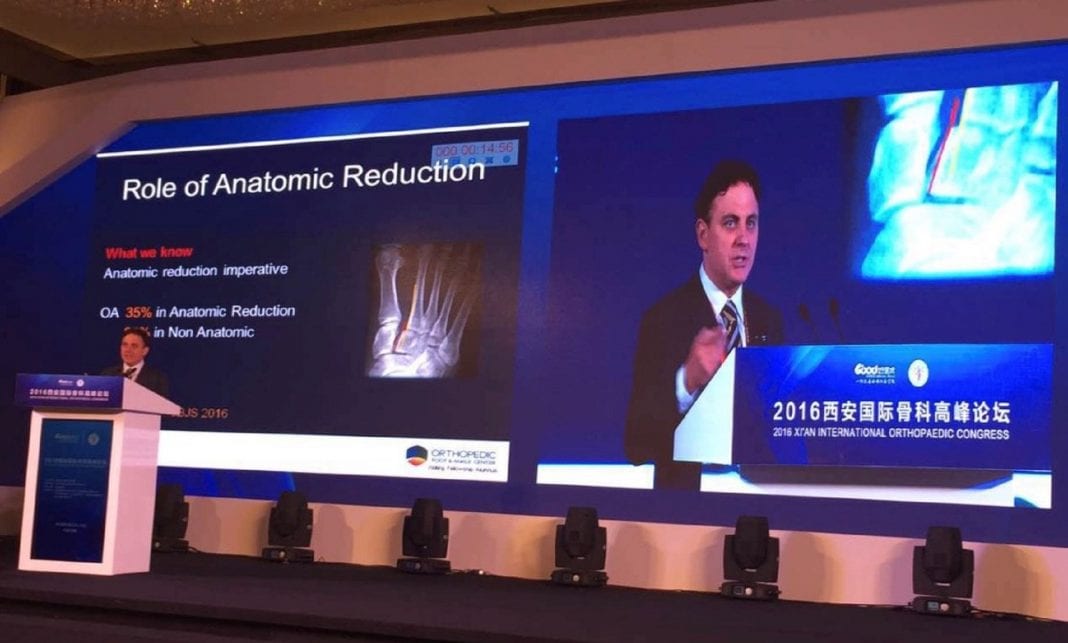Dr. Michael Dujela at Washington Orthopaedic Center is a board-certified, orthopedic fellowship-trained podiatric foot and ankle surgeon. One of the surgeries Dr. Dujela performs is Lapiplasty or “3D bunion correction.” There are only a few doctors in Washington trained and able to use this cutting-edge surgical technique.

Born with a clubfoot that was successfully corrected as a child, Dr. Dujela personally knows what a life-changing experience foot surgery is. He’s trained with some of the world’s leading orthopedic surgeons through three orthopedic surgery fellowships in Switzerland, Germany and the USA. Now, he teaches surgical techniques to other physicians throughout the world and is the author of nine chapters in various surgical textbooks. Recently, he was inducted into the “Leadership Hall of Fame” after he served as the national chairman of the education and scientific committee of the American College of Foot and Ankle Surgeons, the world’s largest foot and ankle surgical society.
The medical term for a bunion is “hallux valgus.” A common misconception is that a bunion is an overgrowth of bone that can be removed. The cause of bunions is an unstable joint in the middle of the foot that allows the metatarsal bone to move out of its normal position. The misalignment causes the big toe to rotate out of place over time creating a prominent often painful “bump” where the great toe joins the foot.
Bunions are ten times more common in women and get progressively worse with age. The condition is common with 23 percent of women age 18-25 and 36 percent of women over age 65 suffering from them to some degree. There is certainly a hereditary foot type or component associated in many cases with bunions. Many patients will note that their mother or grandmother had a bunion. In many cases, non-surgical treatment is successful in alleviating the pain associated with a bunion deformity. Simple shoe changes, padding or spacers can be very effective.

In some cases, surgery is indicated to treat a bunion that has failed to improve with non-surgical care. While there are over 100 different procedures for bunion correction, less than five are frequently done. In a traditional bunion deformity, a 2D procedure is often performed. A Chevron or in some cases a “Keyhole” or other “minimally invasive bunionectomy” is frequently selected because of the easily reproducible technique. In traditional surgery, the metatarsal bone is cut in half and the segment that is out of position is pushed into an improved position.
This addresses the cosmetic bump; however, it does not address the cause of the problem. This approach is only a two-plane correction fix because it does not allow the rotation. The unstable foundation is not corrected at the problematic joint in the midfoot. One in three patients is dissatisfied after a 2D bunion surgery and the traditional bunion surgery has a 50 percent recurrence rate over time according to the literature.
The Lapidus procedure, the more anatomically corrective procedure that addresses all three planes, has only a 3 percent recurrence rate and a successful bone healing rate of approximately 98 percent according to recent studies. Dr. Dujela has performed the standard Lapidus Bunionectomy for over 20 years. Multiple refinements over the years have allowed vary rapid return to activity with weight-bearing beginning at approximately 10-14 days after surgery in a walking boot.
In a Lapiplasty procedure, a “3D” or “Triplane” bunion correction, the entire bone is returned to normal 3D alignment. It addresses all three dimensions and with low-profile, small titanium plates allowing almost immediate weight-bearing.

The Lapiplasty is a highly reproducible technique and allows early weight-bearing. It addresses the problematic joint and is a permanent solution for the vast majority of patients. The key to the Lapiplasty is the highly specialized instrumentation that realigns the bone, corrects the rotation and generally, once realigned, minimal “bump” remains and needs to be removed.
It is important to know that the traditional bunion corrections are also often successful in the right candidate. Dr. Dujela has taught countless surgeons the traditional and advanced techniques, however, when the metatarsal is rotated, there is a high chance of recurrence and an unsatisfactory outcome if it is not realigned in all three planes. Many procedures are performed each year that come for a second opinion and revision of an unsatisfactory outcome after previous bunion surgery. In fact, Dr. Dujela recently published a chapter in a surgical textbook on complications associated with bunion surgery.

“The key is not only successful execution of the operation, but selecting the best type of procedure for the specifics of the deformity,” he says. “Our mantra is ‘Ideal patient, using the ideal procedure, done by the ideal surgeon.’”
Patients come from multiple states and as far as the east coast and even Canada to Washington Orthopaedic Center for the center of excellence in foot and ankle surgery. Dr. Dujela has performed thousands of successful surgeries in his 20 years’ experience and teaches other surgeons worldwide
When looking for a doctor to do Lapiplasty or other foot and ankle surgery, as in all surgeries, it’s very important to make sure to find a board-certified surgeon. Do the research and find someone who is an expert in this field like Dr. Dujela at Washington Orthopaedic Center
Washington Orthopaedic Center
1900 Cooks Hill Rd., Centralia
704 Lilly Rd. S.E., Olympia
1-833-736-2889
Sponsored


















































